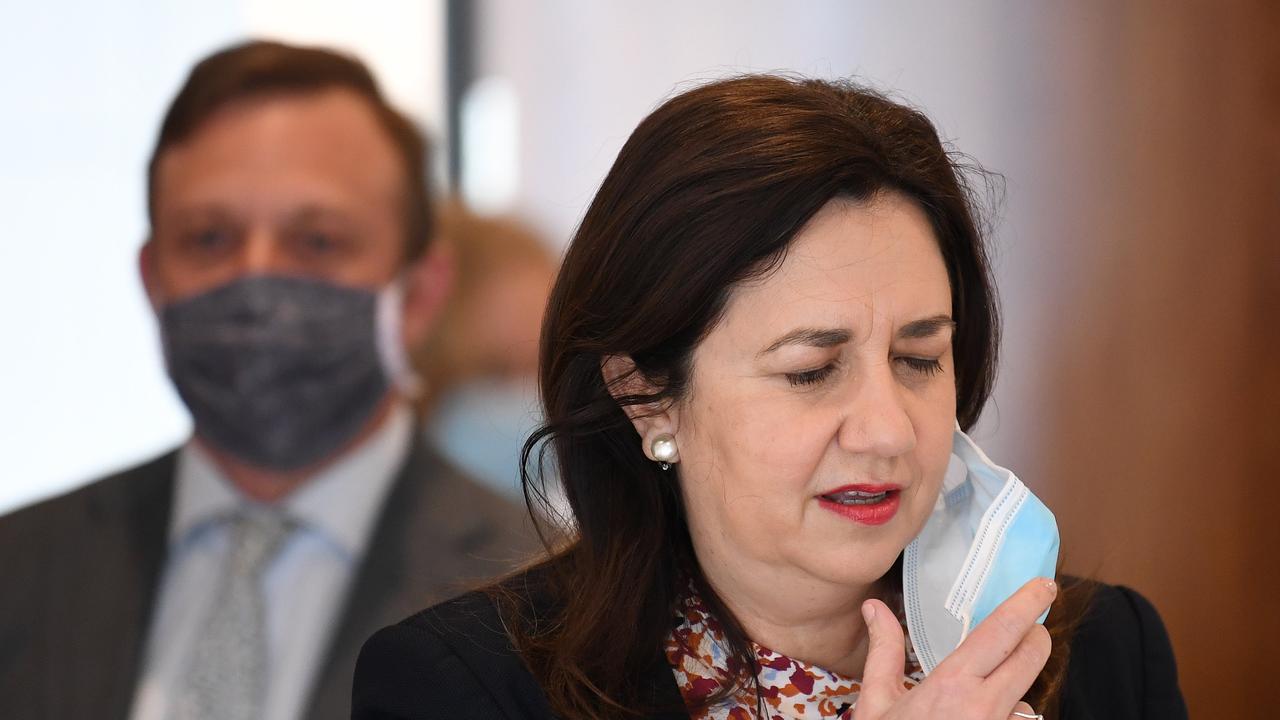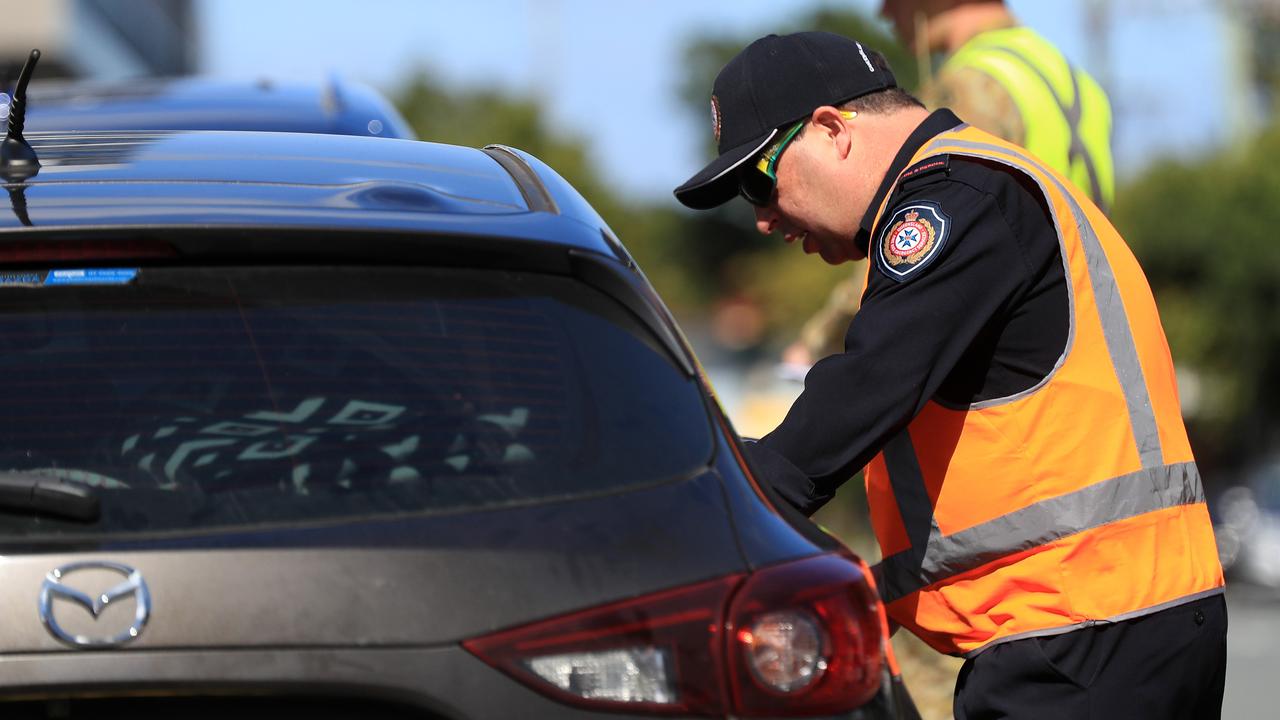Madura’s Maths: The real facts behind state’s Covid-19 figures
We hear a lot about double vaccination, but this is a figure we never hear of. Vaccine analyst Madura McCormack crunches the numbers.

QLD Coronavirus News
Don't miss out on the headlines from QLD Coronavirus News. Followed categories will be added to My News.
Queensland’s vaccination rate is set to surpass the 80 per cent double-vaccinated milestone before the December 17 goal set by the state government. But what else are the numbers showing us about Queensland’s race to get protected against Covid-19?
Portion of eligible Queenslanders that have now had the jab:
TUESDAY, NOVEMBER 23
How many people have failed to show up for their second Covid-19 jab?
In the grand scheme of things, actually not that many.
The federal Health Department confirmed nationally, a total of 245,226 people have failed to rock up for their second Covid-19 jab.
Of those, 57,430 people are in Queensland.
Which sounds like heaps but is actually 1.7 per cent of all people who had a first dose in the state.
By this measure, jabsenteeism is far higher in Western Australia, and the Northern Territory.
What jab did those people get?
In Queensland, 34,648 people are overdue for their second Pfizer dose while 20,498 people are overdue for their second AstraZeneca dose.
There are also 2284 people overdue for their second Moderna dose.
Why did they not get it?
It should be stated first that this data is defined as someone failing to get their second Pfizer dose 43 days (6 weeks) after the initial jab, 85 days (12 weeks) if it’s AstraZeneca or 43 days (6 weeks) if it’s Moderna.
Infectious disease expert Paul Griffin theorised that it could be due to “perception” of an adverse event or really did suffer side effects that made them trepidatious about getting another dose.
He said it was important that people spoke to their GP or vaccine provider to get proper medical advice.
Dr Griffin said there could be other unrelated issues, like life getting in the way, or major surgery.
A federal health spokeswoman said there were “many reasons why someone may not be able to attend their appointment for a COVID-19 vaccine”.
“And the different vaccines do have a range of times in which someone can get their second vaccination and become fully vaccinated as opposed to a single day or week,” she said.
“Missed doses can usually be accounted for through a slight delay in reporting vaccinations in to the Australian Immunisation Register.”
Initial boost from vaccine mandate may have worn off:
The number of people rushing out to get a Covid-19 jab after the Premier announced the vaccine mandate (which comes into play from December 17) seems to have worn off, after trucking along for a solid seven days.
At the peak, about 23,000 Queenslanders got their first Covid-19 jab in one day but this has now tapered off to almost 17,000 people on November 22.
WEDNESDAY, NOVEMBER 17
Controversial vaccine rules seems to be working:
While hundreds of people gathered in the Brisbane CBD in a protest against mandatory vaccination, the jab data revealed the strict rules are prompting a significant surge in uptake.
Queensland’s rolling seven-day average of first jabs has doubled since the Premier announced the state’s latest vaccine policy on November 9.
To frame it a different way, in the seven full days after the Covid-19 road map was announced in mid-October, 117,920 people went out to get their first jab.
In the same time frame since the rules for the unvaccinated were announced, 127,746 Queenslanders aged 16 and older got their first Covid-19 jab.
And not a single state government minister needed to get on a plane, don a hard hat, or hug a koala to make it happen.
What this means for hitting the coveted 90 per cent double vaccinated milestone:
The ongoing surge in first jabs means the 90 per cent double jab date is fluctuating. It’s moved from January 9 to January 6, and now to January 5.
As of the latest data, with 83.21 per cent of people getting at least one dose, there’s still 279,301 eligible Queenslanders that need to get a jab in order to hit 90 per cent.
Previously
How far behind are Queensland’s Aboriginal and Torres Strait Islander peoples when it comes to Covid-19 jabs?
The discrepancy is now nearly 30 percentage points.
While 71.07 per cent of Queenslanders as whole are fully vaccinated, just 42.1 per cent of the state’s Aboriginal and Torres Strait Islander population had received both jabs.
It’s a significant issue particularly amid the outbreak of Covid-19 in a remote community in the Northern Territory, which as of Tuesday had risen to 11 total cases.
The discrepancy between First Nations peoples and the wider Queensland community is one of the starkest in the nation.
Will Queensland hit the 80 per cent double vaccinated milestone earlier than December 17?
Yes, and at this stage it looks likely to happen on or around December 14.
(Details on how this is calculated below)
How does my LGA fair in the vaccination race?
There are now 23 council areas, of the 40 where data is available, that have now surpassed the 80 per cent single dose milestone.
This means they’re on track to hit, at some stage, the 80 per cent fully vaccinated mark — which experts say is enough to ensure an outbreak of Covid-19 doesn’t overwhelm the health system.
Goondiwindi remains Queensland best vaccinated community with more than 95 per cent now protected with at least one dose of a Covid-19 jab.
How are you calculating the estimate on when we’ll hit 80 per cent or 90 per cent double jabbed milestone?
The method we are using here is projecting how long it will take for first dose coverage to be reflected in the second dose coverage.
This is because the second dose coverage is directly related to first dose coverage at some point in time.
Basically each day we’re looking at the double dose coverage Queensland has achieved, versus the number of days prior we were at this level of single dose coverage.
In Queensland this number usually hovers around 35 days, and has been shown to be quite reliable.
For example, Queensland ended November 13 with 70.25 per cent of the population double jabbed. On October 10, 35 days before this, the state ended the day with 70.21 per cent of the population with at least one dose in their arms.
But what if we haven’t yet achieved single dose coverage rates like 90 per cent for example?
This is when the seven-day rolling average on first doses comes into play.
Averaging out how many first doses are going into arms each day based on the past seven days, so that the numbers aren’t too jumpy (to use the scientific term).
By knowing this number, we can estimate how many days it would take to vaccinate a certain number of people and in turn how long it would take, at the current rate, to achieve 90 per cent single dose coverage.
From there we add on the dosing interval (35 days for example) to estimate when that coverage will be reflected as second doses.
If this doesn’t sound very sophisticated, it’s because it isn’t. Ultimately we have to work with the data we have, and because we don’t have more specific data (like what portion of people are taking the three week interval Pfizer, the four week interval Moderna or the 12 week interval AstraZeneca for example).
Read related topics:Vaccine rollout



